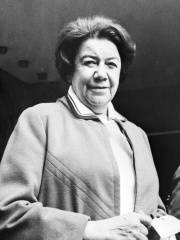
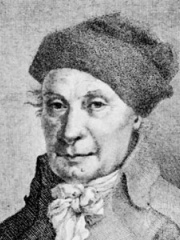
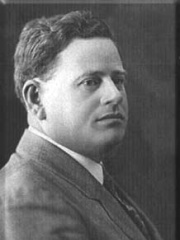
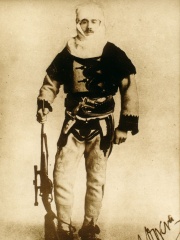
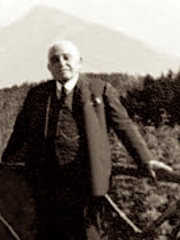
The Most Famous
BIOLOGISTS from Romania
This page contains a list of the greatest Romanian Biologists. The pantheon dataset contains 1,097 Biologists, 6 of which were born in Romania. This makes Romania the birth place of the 23rd most number of Biologists behind Australia, and Latvia.
Top 6
The following people are considered by Pantheon to be the most legendary Romanian Biologists of all time. This list of famous Romanian Biologists is sorted by HPI (Historical Popularity Index), a metric that aggregates information on a biography's online popularity.

1. Ana Aslan (1897 - 1988)
With an HPI of 65.64, Ana Aslan is the most famous Romanian Biologist. Her biography has been translated into 36 different languages on wikipedia.
Ana Aslan (Romanian pronunciation: [ˈana asˈlan]; 1 January 1897 – 20 May 1988), born Anna Aslanyan, was a Romanian biologist and physician of partial Armenian descent. She was born in Brăila and died in Bucharest. Aslan was a specialist in gerontology, academician from 1974 and the director of the National Institute of Geriatrics and Gerontology (1958–1988) known for her invention of the drug Gerovital (H3). Aslan received international recognition for her research in gerontology.

2. Johann Hedwig (1730 - 1799)
With an HPI of 60.34, Johann Hedwig is the 2nd most famous Romanian Biologist. His biography has been translated into 23 different languages.
Johann Hedwig (8 December 1730 – 18 February 1799), also styled as Johannes Hedwig, was a German botanist notable for his studies of mosses. He is sometimes called the "father of bryology". He is known for his particular observations of sexual reproduction in the cryptogams. Many of his writings were in Latin, and his name is rendered in Latin as Ioannis Hedwig or Ioanne Hedwig. The standard author abbreviation Hedw. is used to indicate this person as the author when citing a botanical name.

3. Aaron Aaronsohn (1876 - 1919)
With an HPI of 60.21, Aaron Aaronsohn is the 3rd most famous Romanian Biologist. His biography has been translated into 17 different languages.
Aaron Aaronsohn (Hebrew: אהרון אהרנסון) (21 May 1876 – 15 May 1919) was a Romanian-born Ottoman agronomist, botanist, and political activist, who lived most of his life in Ottoman Syria. Aaronsohn was the discoverer of emmer (Triticum dicoccoides), believed to be "the mother of wheat." He founded and was head of the NILI espionage network.

4. Franz Nopcsa von Felső-Szilvás (1877 - 1933)
With an HPI of 59.17, Franz Nopcsa von Felső-Szilvás is the 4th most famous Romanian Biologist. His biography has been translated into 23 different languages.
Baron Franz Nopcsa von Felső-Szilvás (also Baron Nopcsa von Felső-Szilvás, Baron Nopcsa, Ferenc Nopcsa, báró felsőszilvási Nopcsa Ferenc, Baron Franz Nopcsa, and Franz Baron Nopcsa; May 3, 1877 – April 25, 1933) was a Hungarian aristocrat, adventurer, scholar, geologist, paleontologist and albanologist. He is widely regarded as one of the founders of paleobiology, and first described the theory of insular dwarfism. He was also a specialist on Albanian studies and completed the first geological map of northern Albania.
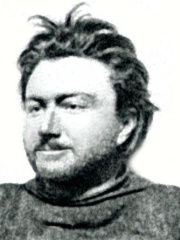
5. Emil Racoviță (1868 - 1947)
With an HPI of 58.75, Emil Racoviță is the 5th most famous Romanian Biologist. Her biography has been translated into 21 different languages.
Emil Gheorghe Racoviță (Romanian: [eˈmil ˈrakovit͡sə]; 15 November 1868 – 19 November 1947) was a Romanian biologist, zoologist, speleologist, and Antarctic explorer. Together with Grigore Antipa, he was one of the most noted promoters of natural sciences in Romania. Racoviță was the first Romanian to have gone on a scientific research expedition to the Antarctic. He was an influential professor, scholar and researcher, and served as President of the Romanian Academy from 1926 to 1929.

6. Grigore Antipa (1867 - 1944)
With an HPI of 54.01, Grigore Antipa is the 6th most famous Romanian Biologist. His biography has been translated into 16 different languages.
Grigore Antipa (Romanian pronunciation: [ɡriˈɡore anˈtipa]; 27 November 1867 in Botoșani – 9 March 1944 in Bucharest) was a Romanian naturalist, zoologist, ichthyologist, ecologist, oceanologist, Darwinist biologist who studied the fauna of the Danube Delta and the Black Sea. Between 1892 and 1944 he was the director of the Bucharest Natural History Museum, which now bears his name. He is also considered to be the first person to modernize the diorama by emphasizing the three-dimensional aspect and first to use dioramas in a museum setting. He is the scientist who reorganized the Grigore Antipa National Museum of Natural History in the new building that today bears his name, designed by the architect Grigore Cerchez, built in 1906 and inaugurated by Carol I of Romania in 1908. He was elected as member of the Romanian Academy in 1910 and was also a member of several foreign academies. Grigore Antipa founded a school of hydrobiology and ichthyology in Romania.
People
Pantheon has 6 people classified as Romanian biologists born between 1730 and 1897. Of these 6, none of them are still alive today. The most famous deceased Romanian biologists include Ana Aslan, Johann Hedwig, and Aaron Aaronsohn.
Deceased Romanian Biologists
Go to all RankingsAna Aslan
1897 - 1988
HPI: 65.64
Johann Hedwig
1730 - 1799
HPI: 60.34
Aaron Aaronsohn
1876 - 1919
HPI: 60.21
Franz Nopcsa von Felső-Szilvás
1877 - 1933
HPI: 59.17
Emil Racoviță
1868 - 1947
HPI: 58.75
Grigore Antipa
1867 - 1944
HPI: 54.01
Overlapping Lives
Which Biologists were alive at the same time? This visualization shows the lifespans of the 6 most globally memorable Biologists since 1700.

